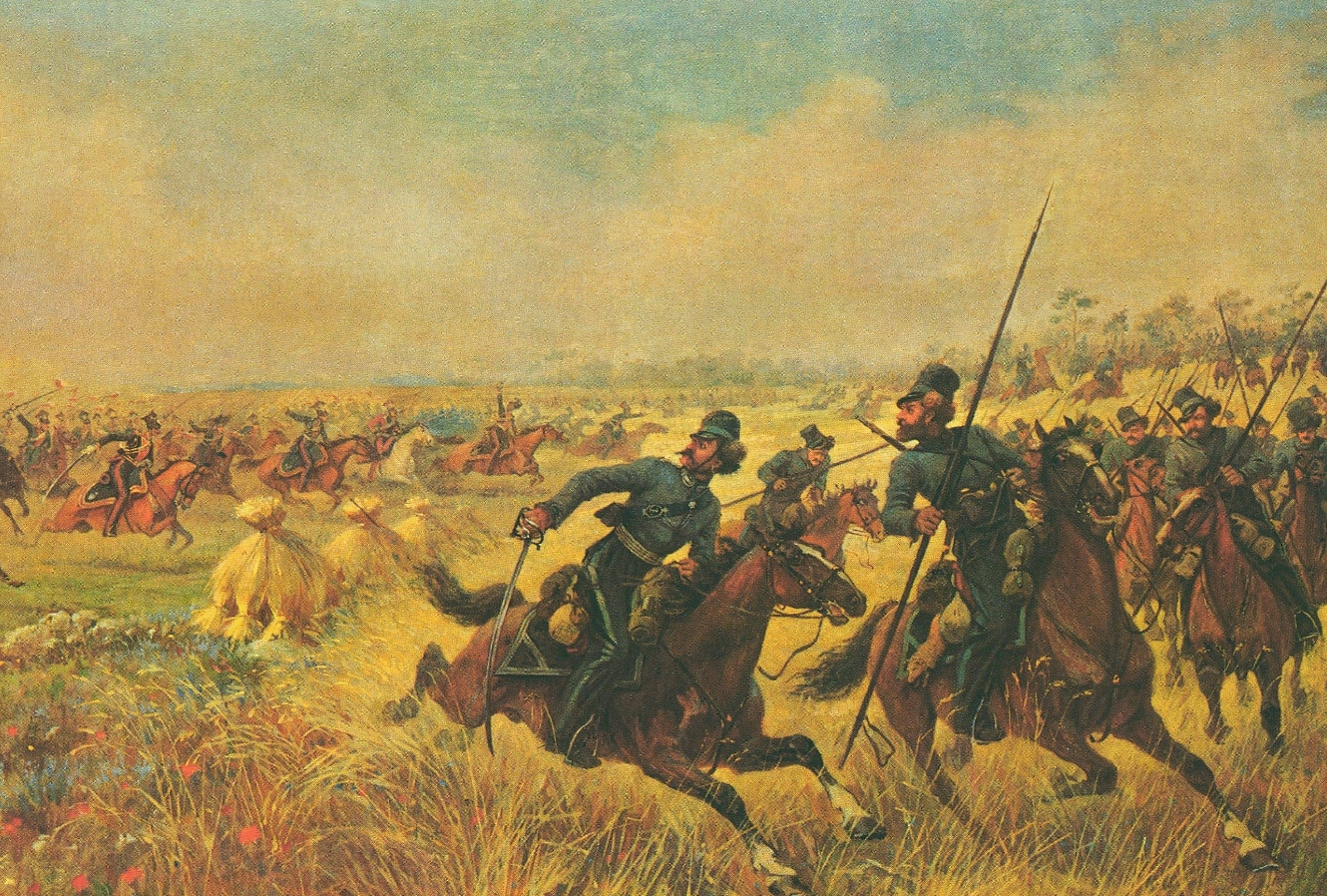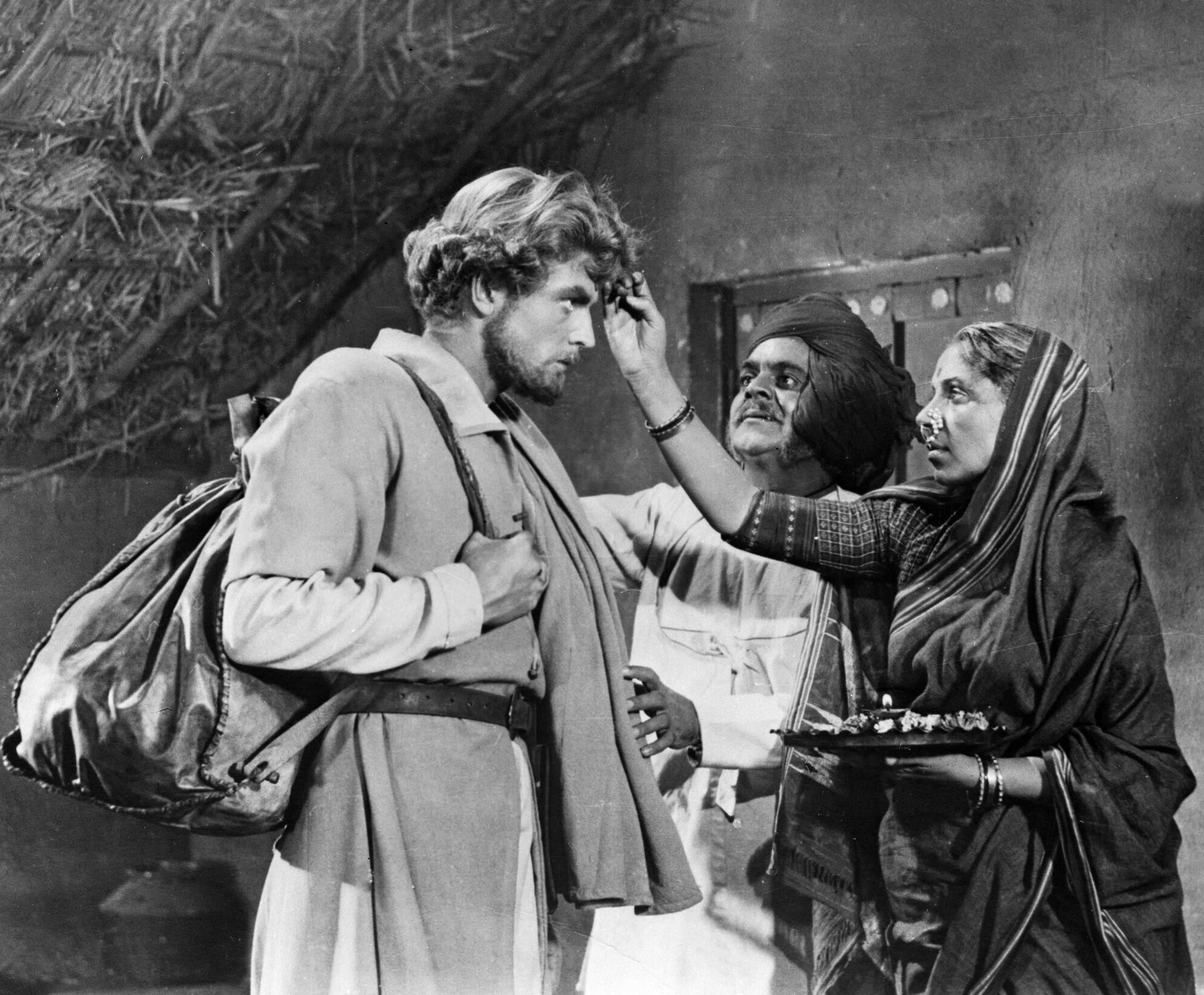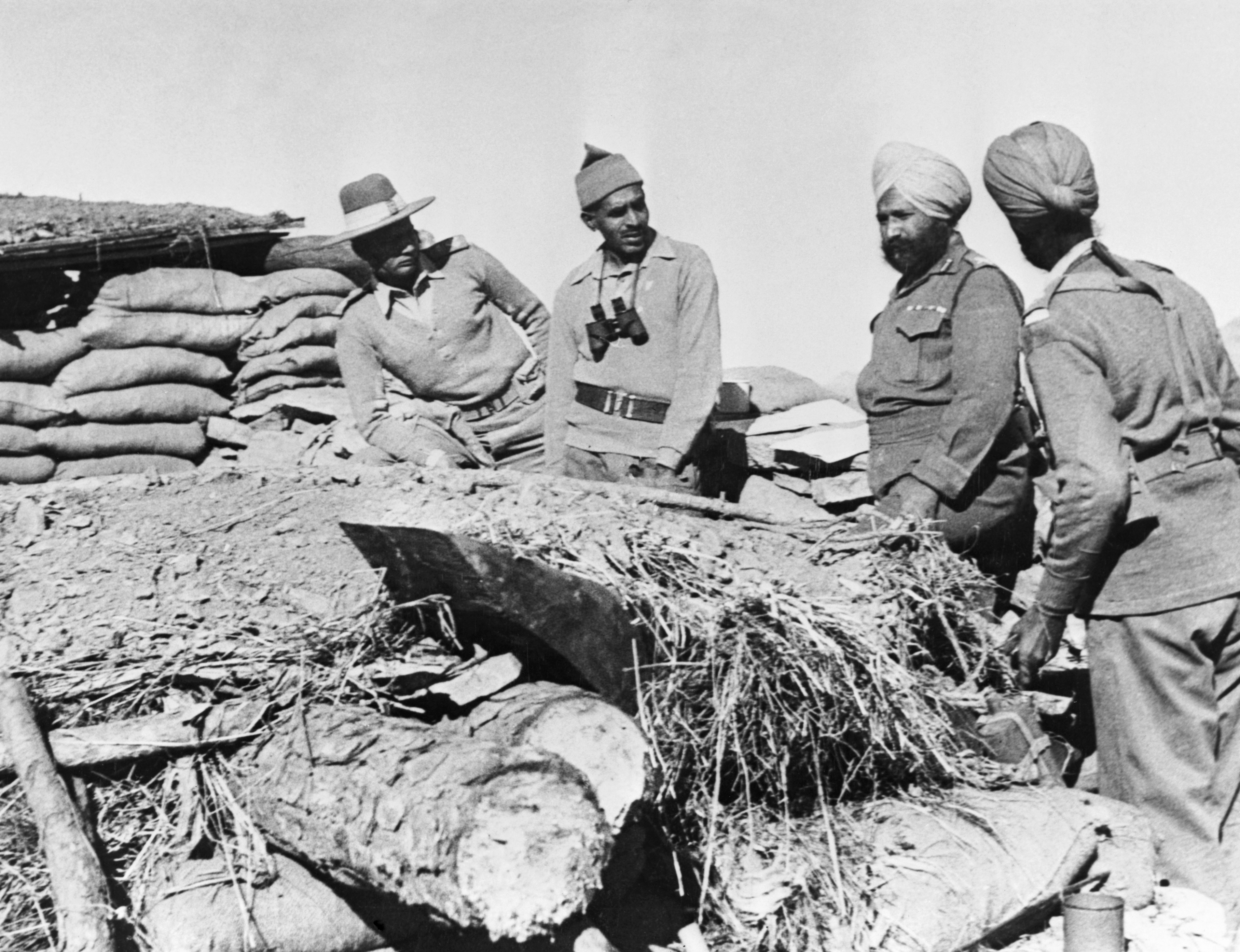Hot pursuit: What India could learn from Russian history

Adolphe Yvon. Marshal Ney supporting the rear guard during the retreat from Moscow (1856)
As large, prosperous countries, Russia and India don’t covet foreign territory and rarely initiate wars. On the contrary, each has been subject to numerous invasions over the centuries. Both countries have fought cataclysmic wars that have shaped their geography as well as history. However, they differ not only in the conduct of their wars but also in the policy of hot pursuit, which is the undeniable right of the defending side.
While Russians usually decimate their attackers, ensuring that the enemy will think thrice before repeating his misadventure, India seems overly keen to offer the olive branch when destroying the enemy and taking the war into his heartland would have been the sensible decision.
The following case studies from both ancient and modern history offer a peek into the nature of war fighting in Russia and India. Hopefully, the next generation of Indian political leadership will not fritter away the gains made by the soldiers on the battlefield.
Semiramis and her tragic mistake
One of the earliest recorded attacks on India was by Semiramis, who ruled the Assyrian Empire during the years 811-806 BCE – or nearly 500 years before the invasion of Alexander of Macedon. According to the accounts of ancient Greek historians Diodorus and Ctesias, the warrior queen “resolved to subjugate the Indians on hearing that they were the most numerous of all nations, and possessed the largest and most beautiful country in the world”.
For two years preparations were made throughout her whole kingdom – modern day Iraq, Egypt, Turkey and parts of Central Asia. In the third year she collected 3,000,000 foot soldiers, 500,000 horsemen and 100,000 chariots. Beside these, 100,000 camels were covered with the sewn skins of black oxen and fitted with fake movable trunks in order to trick the Indians into believing that she had a large elephant corps as well.
According to Greeks accounts, Stabrobates, the king of the Indians, awaited the Assyrians on the bank of the Indus with an even larger force gathered from the whole of India. (Due to the peculiar Greek orthography we’ll probably never know his actual name. Perhaps Satyabrata. Indian records, if any, are lost.)
When Semiramis approached, Stabrobates sent messengers to meet her with the complaint that she was making war upon him though he had done her no wrong. In his letter he reproached her licentious life, and calling the gods to witness, threatened to crucify her if victorious.
Semiramis read the letter, laughed, and said that the Indians would find out her virtue by her actions. The fleet of the Indians lay ready for battle on the Indus. “Semiramis caused her ships to be put together, manned them with her bravest warriors, and, after a long and stubborn contest, the victory fell to her share. A thousand ships of the Indians were sunk and many prisoners taken.”
Stabrobates, pretending flight, led his army back from the Indus, but in reality he wished to induce the enemy to cross the river. When the massive Assyrian army passed over the Indus, Stabrobates wondered how they had procured so many elephants. The mystery was soon solved when some defectors from the enemy side told the Indians these were decoys.
In the ensuing battle, the soldiers of Semiramis resisted only a short time before the Indian elephants caused an immense slaughter. The Assyrians left their ranks and fled, and the king pressed forward against Semiramis. His arrow wounded her arm, and as she turned away his javelin struck her on the back. The wounded Semiramis escaped over the bridge to the other side of the Indus. “The Indians was warned by signs from heaven and their interpretation by the seers not to cross the river.” After exchanging prisoners Semiramis returned. She had lost two-thirds of her army.
Tragedy at Tarain
Arabs had been trying to invade India since the year 638 CE. However, it took them nearly seven decades to defeat the small, nearly barren and outermost kingdom of Sindh and that happened because of dissension in the Indian kingdom. Maulana Abdul Kalam Azad in his ‘Humanity at Death's Door’ and Maulana Nadvi in his ‘Indo-Arab Relations’, write that between 638 CE and 711 CE, the Arabs launched as many as 15 attacks against Sindh by land and via sea. And it was only the last by Mohammed Bin Qasim in 711 that succeeded.
The Indian heartland continued to resist the Islamic armies for centuries. However, that was about to change.
In 1191 CE, Mohammad Ghori, the ruler of Afghanistan, invaded India but was defeated after a fierce battle in Tarain, near Delhi, by Prithviraj Chauhan, the ruler of Ajmer. Ghori was captured and should have been put to death for bringing death and destruction to India but Prithviraj, against the advice of his commanders and ministers, magnanimously let him go.
The Afghan returned in 1192 with an even bigger army, but Prithviraj did not treat the matter as urgent. He refused to recall his main army which was fighting in Bengal – a thousand miles to the east. The Indian king said he would lead his auxiliary army himself, instead of recalling his two leading commanders – who had defeated Ghori the previous year – from Bengal.
In the Second Battle of Tarain, Prithviraj initially had the upper hand but as per Hindu tradition he ordered his army to cease fighting after dusk. This saved the Muslim army from being slaughtered yet again, and they used the reprieve to launch a sneak attack at night. After defeating the Indians they captured and blinded Prithviraj, ending Hindu dominance over north-western India for the next 700 years.
Battling the British the wrong way
It can rightly be said about the British that they lost every battle in India except the last one. Their wars with the major Indian kingdoms such as the Marathas and Sikhs comprised three wars. The British would invariably lose the first two because of superior Indian bravery, numbers and tactics. The British would sue for peace when facing ruin.
 J.C. Stadler. Battle of Assaye (1815)
J.C. Stadler. Battle of Assaye (1815)
After each war the British would do the following: One, try and divide the Indian commanders. Two, bribe key generals to stay out of the next battle. Three, learn the weaknesses of the Indian armies. Four, acquire fresh troops from England and Scotland. Five, reverse engineer captured Indian weapons and return with new improved versions to use against Indian armies.
Like dominoes, the Indian kingdoms fell one by one. Alliances rarely lasted. Nobody except the Marathas thought fit to build a navy. Even the Maratha navy, which was undefeated by the Dutch, British, Portuguese and French, fell victim to the machinations of the Marathas commanders who feared the rise of a competing navy.
No forward policy
Examining just these three case studies, one gets the picture that Indian armies rarely if ever chased the enemy back into his territory. It is clear that Indians are brilliant in battle and irresponsible at war.
Despite five centuries of invasions (from around 638 CE to 1191 CE which resulted in huge casualties and enslavements of hundreds of thousands of Indians) no expeditionary army was assembled by a coalition of kingdoms to strike at the enemy in his nest. Had India conducted pre-emptive raids into Central Asia and Persia, these bordering regions would have never have become launch pads for invasions.
Well-known lawyer and former Law Minister Ram Jethmalani writes about this lack of forward policy among Indians. About the invasion of Sindh, which again is a stark example of a victorious Indian kingdom refusing to the eradicate the enemy before he came dangerously close, Jethmalani says that after Sindh finally fell to the Arabs in 711 CE and despite the horrendous destruction that ensued, the Indian kingdoms to the east did not come together to free their Sindhi brethren:
“Rest of the Indians across the borders of Sindh were doubtless aware of the Arab conquest. It produced not a ripple on the quiet waters of their placid existence. Life went on as usual. There was neither a sense of territorial loss, nor an understanding of the nature of the new menace. The conquest of Sindh was dismissed as one more dacoity. Nearly 500 years elapsed before Mohammed Ghori and his marauding hordes descended on India in 1192 A.D. The whole of northern India was made a tributary to the Ghor Dynasty. Muslim power in India had come to stay. Five centuries went by, but the country did not wake up or prepare to do or die. It is a shameful and tragic tale.”
Jethmalani explains the causes of this inertia: “Afflicted by a debilitating pacifism, corroded by the idea of nonviolence, Indians seemed to have left it to professional soldiers to fight the invaders. The rest of the people lifted not one finger to defend their homeland. Invaders who thirsted for the tremendous wealth of India and its delicate and beautiful women never met the resistance that the nation could have generated. The only strong resistance that was offered came from the proud Rajputs, the descendants of the invading Huns of the earlier days. But even this heroic resistance proved temporary and collapsed by reason of internecine rivalry – a perennial disease of Hindu India, ancient and modern.”
Russian way: Making them eat horsemeat
From the defeat of the dreaded Mongols to Alexander Nevsky’s “Massacre on Ice” of the Swedes, there are numerous instances of Russian overthrow of the foreign yoke. But let’s look at more recent victories.
Following the rejection of his Continental System by Tsar Alexander I, French Emperor Napoleon ordered his Grande Armee into Russia. This enormous army numbered 680,000 soldiers, half of them French and the other half comprising Germans, Poles and several other nationalities of the French Empire.
As Napoleon was a brilliant commander and a genius strategist, the Russian generals knew that in a head-on clash the superior Grand Armee would simply roll over the less experienced Russian army. The Russians therefore resorted to “strategic retreat”.
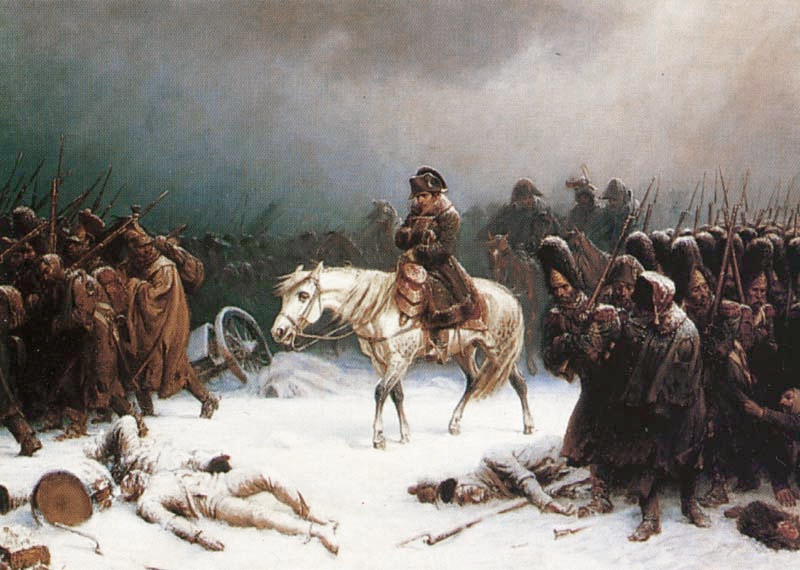 Adolph Northen. Napoleon's retreat from Moscow
Adolph Northen. Napoleon's retreat from Moscow
After a few minor defeats on the border, the Russian army fell back while the Cossacks were given the task of burning villages, towns and crops. This scorched-earth policy was intended to deny the invaders the option of living off the land. Starvation and privation compelled French soldiers to leave their camps at night in search of food. These men became easy targets for roving bands of Cossacks.
The Russian army retreated into the vast country for almost three months before agreeing to fight one of history’s most indecisive battles. The Battle of Borodino, which took place west of Moscow, was a Pyrrhic victory for the French as they lost 49 irreplaceable generals and tens of thousands of soldiers, although the Russians lost more men.
As the Russian army resumed its old tactic of strategic retreat, the French entered Moscow only to see the Russians had abandoned their spiritual capital after setting fire to it. It left Napoleon with only one option.
The French retreat was anything but orderly. It became disastrous when a cleverly timed Russian attack forced the Grand Armee to veer into the corridor stripped of food by both armies. It suffered continual harassment from the Cossacks, peasants and a merciless Russian army.
The fording of rivers became an especially hazardous activity for Napoleon’s troops as Russian forces would converge on them during these crossings. Thousands died due to cold and hunger. It is said only 27,000 soldiers were still standing when the once mighty Grand Armee re-entered France. Of these, only 16,000 would ever fight again.
During their retreat, the French cavalry had ceased to exist because horses had become food. When General Kutuzov had taken command of the Russian army during the middle of the war, he had promised Russia: "I made the Turks eat horsemeat. Give me some time, and the French shall too! Take my word for it, I'll make them eat horsemeat!"
Hitler’s fatal mistake
A hundred and twenty nine years later, German Chancellor Adolf Hitler decided he would succeed where Napoleon couldn’t. In 1941 he invaded Russia with a German Army in excess of 3.8 million battle hardened troops. After suffering heavy early losses, the Russians counterattacked, ending Hitler’s dream of global domination.
From 1941 to the end of World War II in May 1945, the Germans lost 5,318,000 soldiers. Of these, 80 per cent died on the Russian front. Around three million German prisoners of war (POWs) were captured by Russia. The POWs were marched through the streets of Moscow, Kiev and other Soviet cities. This treatment not only broke the spirits of these soldiers but also satisfied the local population which was thirsting for revenge at the wanton death and destruction caused by the invaders. These POWs were employed as forced labour in the Soviet wartime economy and post war reconstruction.
Depending on which side you believe, between 350,000 and one million German Army POWs died in NKVD camps. According to Russian historian Grigori F. Krivosheev, 2,733,739 German POWs taken and 381,067 died in captivity. British historian Richard Overy estimates 356,000 out of 2,880,000 German prisoners of war died in labour camps. For instance, of the 91,000 soldiers of the Sixth Army that surrendered after the Battle of Stalingrad, only 6,000 of them lived to be repatriated after the war.
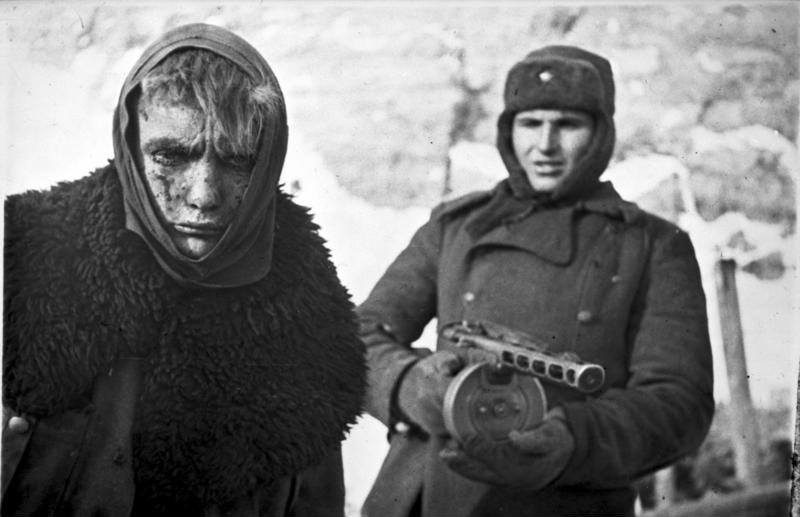 A wounded German POW taken at the Battle of Stalingrad.
A wounded German POW taken at the Battle of Stalingrad.
Did these POWs deserve better treatment? Why don’t you decide. Of the 5,000,000 Soviet soldiers captured by the German armies, the majority did not make it home. The Nazis deliberately starved 3.1 million of the prisoners to death.
When the Red Army soldiers liberated their territories, they were overcome with rage at seeing their once beautiful country turned into a wasteland. As many as 1700 towns and 70,000 villages had been razed. As many 16 million Soviet civilians were killed in addition to the 10 million who died in uniform. The scale of barbarity of the Germans is unparalleled in modern history.
In order to make Germany pay, Stalin took its eastern half and turned it into a communist state. According to historian David Glantz, he created a system of buffer and client states which included Bulgaria, Romania, Hungary, Poland and Czechoslovakia to insulate Russia from any possible future attack. Russia’s action ensured that Germany would never be a threat to Europe.
Inexplicable tolerance
Compare Stalin’s strong actions with how India treated the 97,000 Pakistan Army soldiers captured during the 1971 war. These soldiers had surpassed the Nazis in killing efficiency. While it took the Germans 12 years to murder six million Jews, the Pakistan Army killed three million of its own Bengali citizens in just eight months. And yet when the Indian Army liberated Bangladesh, not one of these war criminals was brought to trial.
On the contrary, they were housed, fed and protected from the anger of the Bengali people. This BBC clip shows 25,000 Pakistani soldiers in Dhaka being “guarded from possible Bengali vengeance by the men with whom less than a fortnight ago they were at war”.
Instead of being held accountable for their crimes before Bangladeshi tribunals, the Pakistani soldiers were transported in heavily guarded trains to India. “At every step they were protected by Indian soldiers had it proved necessary. The Bengalis are not pleased to see their enemies go home apparently scot free.”
India’s top commander Sam Maneckshaw personally visited these POWs, enquiring about their welfare and comfort. When one of them hesitated to shake hands, saying he was a humble toilet cleaner, Manekshaw replied, “We are both soldiers,” and grabbed the Pakistani soldier’s hand.
The Indian political leadership committed a huge strategic blunder by letting the enemy off the hook without extracting a price. That 97,000 Pakistani troops were languishing in India was a huge dent to its pride. It was the opportune time to settle the Kashmir issue in India’s favour. Just like Stalin fixed post-war European boundaries in favour of Russia, Poland and Czechoslovakia at Germany’s expense, Prime Minister Indira Gandhi should have told Pakistan to surrender all claims to Kashmir.
Instead, not only were the POWs allowed to return home on vague assurances of peace by Pakistani Prime Minister Z.A. Bhutto, but 58 Indian soldiers believed to be in Pakistani POW camps were not repatriated. Islamabad, however, refuses to acknowledge these Indian soldiers were ever lodged in its jails.
War is a dirty business. One way to prevent it is to let your enemies know you will make them pay a heavy price for it. Soft targets lead to 1965, 1971, Kargil, Mumbai, Uri, Pathankot. The list will go on as long as India shows the other cheek.
If using any of Russia Beyond's content, partly or in full, always provide an active hyperlink to the original material.
Subscribe
to our newsletter!
Get the week's best stories straight to your inbox
